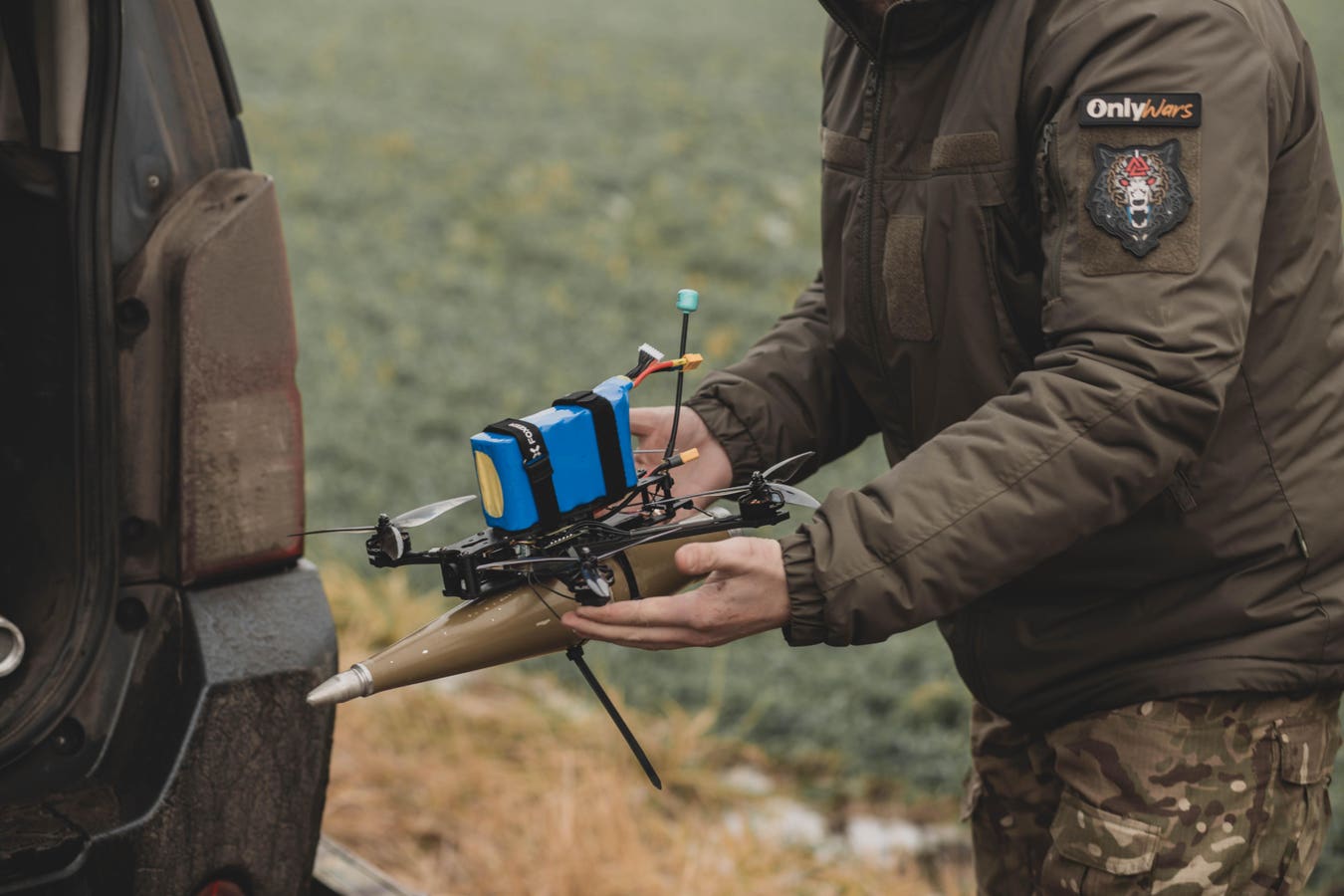A video from Ukrainian drone fundraiser Serhii Sternenko released on March 20th demonstrates new technology: an attack drone which locks on with machine vision and does not require a human pilot. The first Terminator movie dropped forty years ago. Now the technology for autonomous killing is going mainstream, with all that implies.
In the video an FPV attack drone with automatic target recognition homes in on a Russian tank from long distance. Even after the video link tis lost, the drone successfully completes the attack.
A reconnaissance drone watches the FPV hit. Ten seconds after he impact, a more violent secondary explosion shakes the tank from inside and it burns fiercely.
It is not the first time this type of technology has been used. But Sternenko is collecting funds to build a thousand of the drones, indicating moving beyond prototyping to mass production.
Autonomous Hunter Killers
The main protection against FPV drones is radio-frequency jamming, which can shut down the video link between the drone and the operator, prevent the drone from receiving control signals, or confuse its navigation. There is a continuing arms race as developers build more advanced jammers and drone makers upgrade their communications to beat the jamming.
A drone which uses machine vision to track its target automatically and does not rely on operator signals is immune to jamming.
“They neutralize the work of the enemy’s EW [Electronic Warfare] in most cases and allow you to hit the enemy even more effectively,” states Sternenko.
In addition to being jammed, FPV drones typically lose communication in the last few hundred feet of the attack as they drop below the radio communication horizon. Skilled operators are able to allow for this and ensure that the drone is on target so its momentum with carry it through. Automatic guidance removes this problem.
The system which Sternenko showcases appears to be semi-automatic in the sense that the target is identified and highlighted first by a human. But it is just a short step from this to fully automatic systems like the technology developed by Ukraine’s Saker for heavy bomber drones which automatically spots, locate and identify targets, picking out the one with highest value.
Low-Cost Autonomy
The Saker system appears to be relatively large and expensive, but Sternenko says that drones with the new automatic guidance system will cost $1,000 each. That’s a significant increase over other FPV drones which cost around $400, but peanuts compared to guided weapons like the Javelin anti-tank missile which costs around $200,000 a shot.
There are rival systems out there on both sides. Russia has been testing a homing version of its Ovod (“Gadfly”) drone since last August. Ukrainian group AirUnit said they were in the ‘final stages’ of development with their machine vision FPV guidance system last October, and two other projects (First Contact and Jack in the Box
JACK
Russia’s Lancet loitering munition is a kind of super-sized, fixed wing FPV with longer range, made by Kalashnikov subsidiary ZALA. The company is working with automatic guidance; this appears to have had some problems and may have been withdrawn, but a more advanced version is in the pipeline.
“Both sides are heavily investing in this capability and are trying to gain first mover advantage,” Samuel Bendett, an expert Russian drones and adviser to both the CNA and CNAS, told Forbes.
Bendett notes that it is impossible to tell from the video just how effective the guidance system is. Sternenko’s post states that “the technology is new, needs improvement” and that some of the funds raised will be used for development rather than production. But he seems keen to roll it out – ready or not.
The Challenges Of Autonomous Weapons
“AI for object detection is definitely plausible, but like with the Lancet, the question is ‘how reliable is the targeting system?’ ” asks Zak Kallenborn of CSIS’s Strategic Technology Program.
The ethical implications of autonomous weapons have always been highly contentious, and the subject of prolonged debate in the UN as the international community seeks ways to regulate them. As Kallenborn notes, there are key questions about which need to be addressed with any new system.
“How extensively was the system tested? What sort of human oversight and assessment is there before initiating an autonomous attack?” Kallenborn asks.
We get some idea of the limitations of the autonomous FPV from a second attack video, which shows a strike on a BM-21 “Grad” truck-mounted multiple rocket launcher. A Russian soldier runs away from the truck as the FPV approaches, and the drone seems to lock on to him. A video from another drone shows its momentum carries it into the target anyway.
“At the last moment, the drone switched to the fleeing Russian, but still flew into the Grad by inertia,” notes Sternenko, adding that this shows why more money is needed to improve the technology.
In the video the autonomous FPV is followed by a second operator-guided drone which confirms the kill and pursues a second Russian vehicle.
This shows the problem that an autonomous weapon may get distracted from its valid target and start tracking a civilian vehicle or innocent bystander. Human-directed weapons also hit the wrong targets, but clear rules of engagement should minimize the risk and where civilians are killed there is clear accountability. The situation is murkier with autonomous weapons.
These are secondary considerations for Ukraine. The challenge is how to beat Russian jamming and destroy the invaders’ vehicles, and masses of low-cost autonomous attack drones seem like an effiective way to do that.
In less than 24 hours, Sternenko was already 60% towards his fundraising goal. His previous efforts have succeeded in delivering large numbers of attack drones. In January he raised money for more than 2,000 FPVs with thermal imaging for night attacks. This is simply slightly more advanced technology.
“I am not stupid, you know,” says Sarah Connor in the original 1984 Terminator movie, refusing to believe that a killer robot is after her. “They cannot make things like that yet.”
“Not yet,” Kyle Reese tells her. “Not for about forty years.”
Forty years is now up. Not only do autonomous weapons exist, they can be built at a kitchen table with components bought online. And as Sternenko suggest, they are rapidly improving. It will take some time for the world to fully comes to terms with what this means.
Read the full article here





